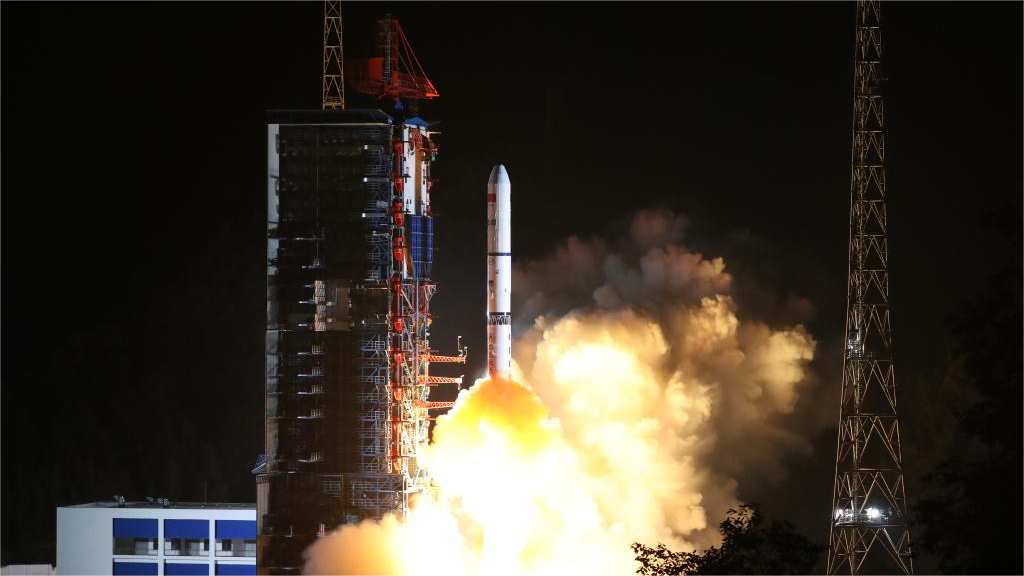Powered by emerging industrial sectors, vitality of China's economic powerhouse shines
GUANGZHOU, Oct. 25 (Xinhua) -- As home to China's prominent tech giants, including Huawei, Tencent, and electric car brand BYD, south China's economic powerhouse province of Guangdong finds its development momentum driven by new industrial sectors is becoming an anchor for economic growth.
Bearing witness to a more noticeable overall economic recovery trend in the third quarter of 2023, the province is upbeat about its reinvigorating economy and brighter future.
According to CleanTechnica, a cleantech-focused website in the United States, the top three companies globally in terms of sales of new energy vehicles (NEVs) for the first eight months of this year include two from Guangdong.
In this ranking, China's NEV giant BYD, based in the tech hub of Shenzhen, claims the top spot, while Guangzhou's GAC Aion New Energy Automobile Co., Ltd. secures the third position.
"This indicates that the emerging industry of new energy vehicles in Guangdong is becoming more competitive," said Xiao Yong, deputy general manager of GAC Aion.
Maintaining innovation and continuous breakthroughs in critical areas are crucial factors behind the remarkable competitiveness of China's new energy vehicle industry.
As per GAC Aion, on Oct. 9, the company delivered its first pure electric supercar, the Hyper SSR, marking the world's first mass-produced pure electric supercar. This model's production line is also China's first supercar production line in operation.
Automobiles have a significant amplification effect throughout the industry value chain, with each car contributing to a value of about eight to ten times its selling price, the senior executive explained.
"The supercar's current price ranges from 1.28 to 1.68 million yuan (about 178,312 to 234,035 U.S. dollars). This means each sale of the electric supercar will generate over 10 million yuan to the industry value chain, significantly driving economic growth," said Xiao.
The new energy vehicle is not the only emerging industrial sector flourishing in Guangdong.
According to data from the provincial statistics bureau, high-end manufacturing sectors, including integrated circuits, optoelectronic devices, and solar cell products, have demonstrated significant growth in the first three quarters of this year. All three sectors have achieved double-digit growth during this period.
"The emerging new industries continuously inject a steady stream of development momentum into Guangdong's economic growth," said Wang Liying, the deputy director of the bureau.
What's even more promising is that the foundation of Guangdong's manufacturing sectors is getting increasingly robust, thanks to the integration with cutting-edge technologies.
On Sept. 28, Hsu Fu Chi International Group, a leading snack and confectionery producer, celebrated the grand opening of a gummy candy workshop project with a 120-million-yuan investment in Dongguan City, Guangdong Province.
Liu Xinggang, CEO of the company, said that the candy maker has invested 180 million yuan in recent years to upgrade production lines for intelligent capabilities, aimed at boosting production capacity. "We are expanding our investment because we have the demand and the confidence to do so. In the first three quarters of this year, our candy sales saw a remarkable 30-percent year-on-year increase, with gummy candy sales up 79 percent."
During the initial three quarters of the year, Guangdong witnessed a 23.9 percent year-on-year increase in fixed asset investment in industrial sectors. Specifically, manufacturing investment surged by 20 percent.
The province has been swift in nurturing new growth drivers, with high-tech manufacturing investment posting a robust 21.4 percent growth, while advanced manufacturing investment grew by 18.8 percent.
Photos
Related Stories
- China's gold output, consumption rise in first nine months of 2023
- Prickly fruit boosts rural economy in hilly province
- China's central bank adds liquidity via reverse repos
- BRICS members agree on further cooperation for sustainable tourism recovery
- China's employment stays stable, 10.22 mln new urban jobs added in January-September
- China's finance ministry issues 16 bln yuan of treasury bonds in Hong Kong
Copyright © 2023 People's Daily Online. All Rights Reserved.









